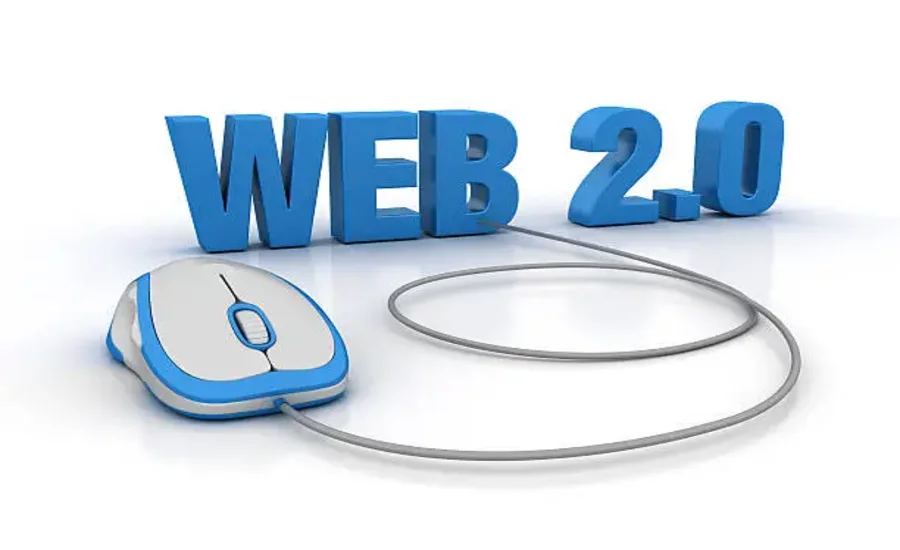
Web 2.0 backlinks are an essential part of search engine optimization (SEO), which is always changing with new updates and trends every year. A backlink works like a trust signal from one website to another, helping Google and other search engines decide which sites are reliable and useful.
Among the different types of backlinks, Web 2.0 links still play an important role in modern SEO strategies. Even though some consider them old-fashioned, they can still deliver value when used the right way.
What are web 2.0 backlinks?
Web 2.0 platforms are websites where people can create and share their own content. Unlike the early internet, where websites were more static, web 2.0 sites are interactive and allow anyone to publish articles, images, or even videos. When you write content on these platforms and add a link to your own website, you create web 2.0 backlinks.
Some well-known platforms that allow this are WordPress.com, Blogger, Medium, and Tumblr. These websites usually have a strong reputation with Google. SEO services in Pakistan can benefit greatly from links on such platforms. Because of that, links from them can help smaller or newer sites get noticed.
Why web 2.0 backlinks matter in SEO
Some marketers ignore web 2.0 backlinks because they think Google no longer values them. While it’s true that low-quality or spammy web 2.0 links don’t work, well-made ones can still help. Here’s why:
- Trusted domains: Web 2.0 sites usually have high domain authority. A link from them can add credibility.
- Full control: You write the content yourself, so you control the keywords, anchor text, and how the backlink is placed.
- Low cost: Most web 2.0 platforms are free to use, which makes them good for beginners or small businesses.
- Fast indexing: Google often crawls these sites, which helps your new pages get found quicker.
- Extra visibility: Posting useful content on web 2.0 blogs can also attract real readers, not just search engines.
How backlinks web 2.0 fit into SEO strategies
Modern SEO strategies are no longer just about building as many links as possible. They are about building the right type of links that show authority, trust, and relevance. This is where web 2.0 backlinks still play a role. For new websites, they can act as a foundation. They help search engines discover your pages faster and give early signs of authority.
However, their role is supportive rather than primary. They should not replace other methods like guest posting, digital PR, or outreach campaigns. Instead, they should be used alongside these methods. Think of them as a starting point, or an extra layer of support for your main strategy.
Using them the right way
The success of web 2.0 backlinks depends on how you use them. Writing random posts with no value will not help. The key is to publish unique and useful content. Even though the main purpose is to create a backlink, the content must still make sense to a reader. Search engines are smart enough to detect when content is written only for links.
It is also important to avoid keyword stuffing. Many beginners make the mistake of repeating their main Seed keyword too many times in web 2.0 posts. This looks unnatural. Instead, the keyword should appear only a few times and in a natural way. A good article on a web 2.0 blog can include a backlink in the middle of the content, where it flows naturally with the topic.
Example of real use
Imagine a person who runs a small website about healthy food. They could write an article on Medium titled “Simple Smoothie Recipes for Beginners” and inside that article, add a link back to their website’s recipe section. On WordPress.com, they could publish another article about “The Benefits of Organic Vegetables” and add another link to their site. These articles would stand on their own as useful content, but they would also give backlinks to the main site.
This shows how web 2.0 backlinks can be both practical and safe when used carefully. They bring in some authority from strong platforms while also reaching people who are interested in the same topic.
The future of web 2.0 backlinks
The future of SEO is moving toward more focus on trust, expertise, and real value for readers. This means web 2.0 backlinks alone cannot guarantee success. But they will remain useful if done with quality. They are free, easy to set up, and give beginners a way to build early credibility.
Over time, they should be combined with other link-building methods. Guest posts, outreach to relevant blogs, and mentions from industry websites will always carry more weight. Yet backlinks will continue to be a safe way to support overall strategies, especially for small businesses or new projects that cannot invest in bigger campaigns right away.
FAQs
1. Are web 2.0 backlinks safe?
Yes, they are safe when the content is original and the links are natural. Spammy or automated backlinks are not safe.
2. Can they increase domain authority?
They can help a little, but big improvements usually come from stronger backlinks like guest posts and editorial links.
3. How many should I create?
There is no exact number. Hundreds of low-quality backlinks are not as good as a few high-quality ones.
4. Do I need to keep web 2.0 blogs active?
Yes, updating them sometimes makes them look natural and keeps the backlinks strong.
Conclusion
Even if Web 2.0 backlinks aren’t the most powerful ranking criteria right now, they can nevertheless be helpful in contemporary SEO tactics. They can assist websites, are easy to make, and are free to use. get discovered. When combined with good content, natural linking, and other SEO methods, they support growth in a safe and steady way.
For beginners, they can serve as a starting point, and for experienced marketers, they can be a supporting tool. The most important thing is to treat them as part of a bigger plan rather than the only method. In the end, quality, trust, and usefulness will always matter most in SEO.






